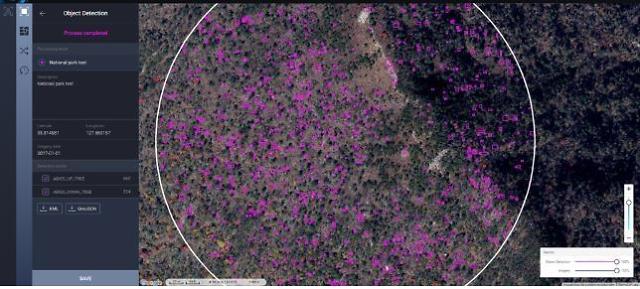
[Courtesy of the Korea National Park Service]
According to the Ministry of Environment, climate change has accelerated phenomena involving dying trees. Narrow-leaved evergreens that mainly form colonies in subalpine areas including Korean Fir are the most affected. Korean Fir, also known as Abies koreana, is an evergreen tree indigenous to the Korean peninsula.
Mount Chiri is well-known for hostile landscapes including ravines and cliffs. It was near impossible for researchers to roll out a field operation to monitor the environment. The ministry said that it would take a year for researchers to conduct research over an area of 41 square kilometers (15.8 square miles).
The environment ministry said in a statement on March 15 that the Korea National Park Service (KNPS) partnered with Dabio, a domestic AI deep learning technology developer, and Samah, an aerial survey company, to create a map of dead trees in Mount Chiri. The dead tree monitoring system was put to a two-day test in November 2020.
"Starting with this AI tree monitoring technology, we will apply AI to various sectors including climate change, ecology resources, prevention of forest damages by insects, and prevention of landslides, to ensure safe and efficient field research operations," KNPS research head Choi Seung-woon was quoted as saying.
Through the test, KNPS detected 54,781 dead trees in an area of 41 square kilometers. Before the test-run, the AI system studied the texture, shape and colors of some 4,000 dead trees found in Chiri's subalpine areas using deep learning technology. By studying colonies of dead trees, the national park service said that researchers can build preventative plans and counteraction scenarios against climate change.




